Federal Court Finds Michigan Districts Unconstitutionally Gerrymandered
A Federal Court in Michigan has found several of that state's Congressional and state legislative districts to have been subject to extreme partisan gerrymandering.
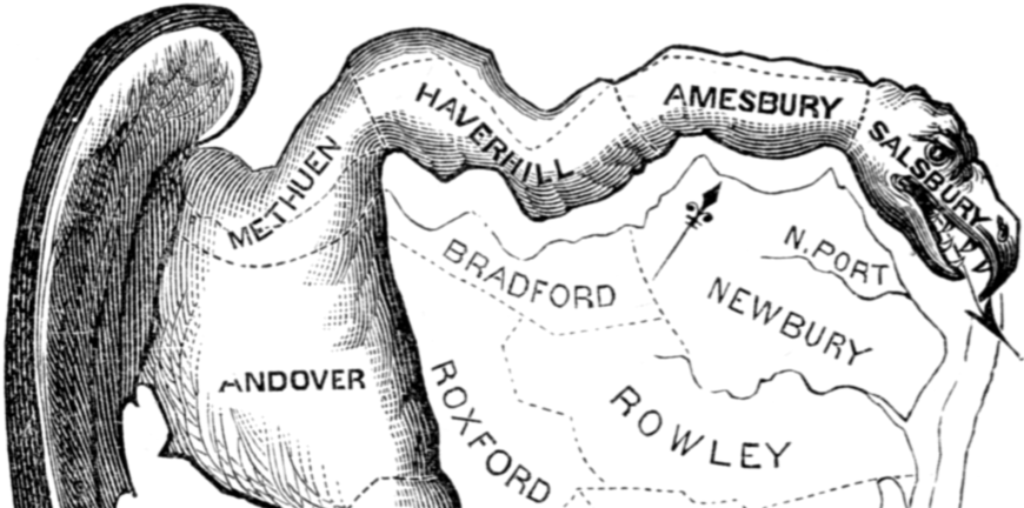
A three-judge panel of Federal Judges in Michigan has ruled that several of the states Congressional and state legislative districts are unconstitutionally gerrymandered for partisan purposes and is ordering the state’s legislature and Governor to come up with new maps for the 2020 election:
WASHINGTON — A panel of three federal judges ruled on Thursday that 34 congressional and state legislative districts in Michigan are extreme partisan gerrymanders and unconstitutional. The judges ordered state lawmakers to redraw maps in time for elections in 2020.
The panel wrote that it was joining “the growing chorus of federal courts” that have held that drawing districts to unfairly favor the party in power is unconstitutional. The judges said the maps violated Democratic voters’ constitutional rights.
But the impact of the ruling ultimately will turn on an opinion by the Supreme Court, which is weighing decisions in two other partisan gerrymander cases involving congressional districts in North Carolina and Maryland. The justices’ decision in those cases, expected by the end of June, could reinforce the Michigan ruling, force alterations to it, or even overrule it entirely.
The 146-page Michigan opinion, joined by two judges named to the bench by President Bill Clinton and one named by President George Bush, made a pointed and passionate argument to the justices for action to outlaw at least some partisan gerrymanders.
During arguments in the Supreme Court cases last month, some justices questioned whether it was possible to draw a bright line between an acceptable political map and one that is too partisan, and others wondered aloud whether a growing public outcry against partisan maps might solve the problem without judicial intervention.
But in the Michigan ruling, the three judges said emphatically that inaction was not an option.
“Federal courts must not abdicate their responsibility to protect American voters from this unconstitutional and pernicious practice that undermines our democracy,” they wrote, adding that failing to protect voters’ rights “will only increase the citizenry’s growing disenchantment with, and disillusionment in, our democracy.”
In what seemed to be a direct message to the Supreme Court, they said that “judges — and justices — must act in accordance with their obligation to vindicate the constitutional rights of those harmed by partisan gerrymandering.”
Michigan is frequently a battleground state in statewide and national elections, divided about evenly between the two major parties. The state’s Republican-dominated Legislature controlled redistricting after population data from the 2010 census became available.
The Michigan opinion on Thursday invalidated the boundaries drawn by the state legislature in 2011 for nine of the state’s 14 congressional districts, as well as for 25 seats in the State House and State Senate. The judges said that the congressional maps and most of the state legislative maps in question violated the 14th Amendment’s broad guarantee of equal protection by creating “districts that were intentionally drawn to ensure a particular outcome in each district.”
Perhaps more strikingly, the judges ruled that all 34 maps violated Democratic voters’ First Amendment right to freedom of association and effectively punished them for their political views by placing them in districts where their votes were worthless. Plaintiffs in the North Carolina gerrymander case made the same argument to the Supreme Court in March.
In each of the contested districts, the judges wrote, the plaintiffs — the League of Women Voters, representing individual Michigan citizens — proved that the legislature had intended to silence Democratic voters, that the maps succeeded at that task, and that there was no other reasonable justification for the way the maps were drawn.
The judges rejected the contention by lawyers for the legislature that the maps simply adhered to state standards that lawmakers were required to follow when drawing political boundaries — that districts have nearly the same population, for example, and that the mapmakers try not to split counties and cities. “The evidence points only to one conclusion: partisan considerations played a central role in every aspect of the redistricting process,” the judges wrote.
In elections from 2012 through 2016, they noted, Michigan Republicans won nine of the state’s 14 House seats — 64 percent — despite failing to win more than 50.5 percent of the statewide vote in any of those years. And last year, when Democrats won nearly 56 percent of the vote and swept statewide offices, they still won only half the 14 House seats.
The legislators’ case was undermined early on by a string of emails unearthed during discovery that laid bare both their intentions and the political animus behind them. The emails boasted of packing “Dem garbage” into four districts in southeastern Michigan, leaving adjacent districts with secure Republican majorities. And the messages joked over how a narrow extension of one Democratic congressman’s district was “giving the finger” to its incumbent.
Another 2011 email noted that Republican Party experts, who earlier had mounted a nationwide campaign to capture state legislatures and control redistricting, had created a congressional map for Michigan that would increase the party’s share of seats in the state to 10 out of 14. But a state Republican strategist rejected that map, saying that “we need for legal and P.R. purposes a good-looking map” that did not “look like a gerrymander.”
The judges appeared most swayed, however, by stacks of statistical evidence that the 34 House and legislative districts so profoundly benefited Republicans that there was no plausible explanation for their shapes beyond locking in a partisan advantage.
While gerrymandering for racial reasons is not a new issue for the courts, political gerrymandering for partisan advantage and the question of how much is too much when it comes to drawing political boundaries that benefit one party over the other is of a relatively new legal vintage. Indeed, as I have noted before partisan gerrymandering is something that is as old as the Republic itself and its named after one of the Founding Fathers and signatories to the Declaration of Independence and the Articles of Confederation. As such, there has long been a debate in legal circles over the extent to which the courts can and should interfere in what is, in the end, a political process that doesn’t appear on its face to directly implicate any of the provisions of the Constitution or Federal law. Notwithstanding this, recent years have seen an effort by activists and academics to attempt to formulate a legal argument that extreme partisan gerrymandering is unconstitutional.
The trend began with cases out of Wisconsin and Maryland in which the districts drawn by the respective legislatures were challenged for different reasons. In the Wisconsin case, it was the Republican Party that benefited overwhelmingly from the manner in which the map was drawn statewide. In the Maryland case, it was the Democratic Party that benefited from a redrawing of the boundaries of the state’s Sixth Congressional District that shifted it significantly eastward into the suburbs around the District of Columbia, thus making it more Democratic and pushing Roscoe Bartlett, a longtime Republican incumbent from a generally Democratic state, out of office in 2012 and diluting the political impact of the heavily Republican areas of western Maryland that borders Pennsylvania and West Virginia. When the Court accepted these cases for oral argument, there was speculation that they could lead to landmark rulings that would place serious limits on the ability of state’s to draw districts that benefited one political party over the other.
When oral argument was heard in both cases, though, it was clear that the Justices were divided on the issue and unsure about the implications of issuing the kind of landmark rulings that the Plaintiffs in both cases were hoping for. Many speculated at the time that the fate of the two cases would depend on where former Associate Justice Anthony Kennedy stood on the cases. In the end, though, the Court ended up issuing unanimous rulings that punted the cases on procedural issues rather than getting to the substantive legal issues raised by them. In one case, Gil v. Whitford, the Court held that the Plaintiffs in the case had failed to demonstrate that they had legal standing to challenge the entire redistricting map in Wisconsin. In the second case, Benisek et al v. Lamone et al.,the Justices ruled that the Plaintiffs in the case had failed to demonstrate the grounds necessary to receive a Preliminary Injunction from the District Court to prevent elections in Maryland’s Sixth Congressional District based on the 2011 map. Both cases were remanded back to the relevant District Court for further proceedings. The Benisek case that the Justices agreed to accept on Friday is essentially a second bite at the appellate apple for the Plaintiffs.
While those cases were pending in the Supreme Court, though, there was a far more interesting and potentially groundbreaking case pending in North Carolina. In that case, a three-Judge panel of the U.S. District Court for the Middle District of North Carolina issued a ruling last January that struck down that state’s map, ruling that the map was unconstitutional because it had been unfairly drawn for the primary purpose of achieving a partisan advantage for Republicans.
In the opinion, the Court cited evidence of partisan intent in the comments of the legislators at the time it was imposed as well as the extent to which the map clearly benefited Republicans over Democrats to the point where the GOP now holds ten out of the state’s thirteen Congressional seats notwithstanding the fact that this isn’t even close to being representative of the population of the state as a whole. Specifically, the Court found that the legislature had been “motivated by invidious partisan intent” in drawing the map and that, as a result, violated the 14th Amendment’s guarantee of equal protection. In reaching this decision, the judges applied the same three-part test that had been applied by the District Court in Whitford, finding that the map (1) was drawn with the specific discriminatory intent of benefiting one political party and harming the other, (2) resulted in a demonstrably discriminatory effect in that it created a map that created a decided partisan advantage for the party that drew the map and, (3) that there was no legitimate justification for this outcome other than the conclusion that it was drawn with the intent of discriminating against one party and in favor of the other. That ruling, though, was on a preliminary injunction, and it wasn’t until August of last year that the Court ruled that North Carolina’s map was unconstitutional. It’s that ruling that the Justices have agreed to review.
It was this case that the Supreme Court agreed to hear in January, and oral argument was heard in the case in late March. As James Joyner noted at the time, the Justices appeared to divide into their liberal and conservative camps. with the conservatives apparently willing to let state legislatures continue to draw district lines for partisan purposes. The opinion in that case is expected by the end of the current term of the Court in June and will likely impact any future action in this case and other pending around the country.
The Michigan case has elements to it that are similar to both the Wisconsin case and the North Carolina case. As with the Wisconsin case, the Michigan Plaintiffs relied in part on a statistical analysis that purports to demonstrate that the partisan balance that the 2011 maps created in the state created such a significant partisan imbalance compared to the population of the state that it was nearly impossible that there could be an innocent explanation for the way the lines were drawn. As I noted at the time the original Wisconsin decision came down, this use of statistical models is questionable at best given the fact that the Constitution gives the states near unlimited power in drawing district lines.
In addition to these statistical arguments, though, the Plaintiffs in Michigan uncovered clear evidence that partisan advantage was the intent behind the manner in which district lines were drawn after the 2010 Census. This also happened in the North Carolina case and was one of the major reasons for why the Court decided the way it did, Whether that intent will matter to the Justices, though, remains to be seen.
In any case, this means that the outcome in the North Carolina case is likely to have a huge influence on future legal proceedings in this Michigan case. A ruling in favor of the state would mean that the case is essentially dead in the water and would also close the door on a number of challenges to Congressional and state legislative maps around the country. A ruling in favor of the Plaintiffs would open the door to a number of challenges that courts could be dealing with for years to come. All we can do at this point is wait for the Justices to speak.
League of Women Voters Et A… by on Scribd

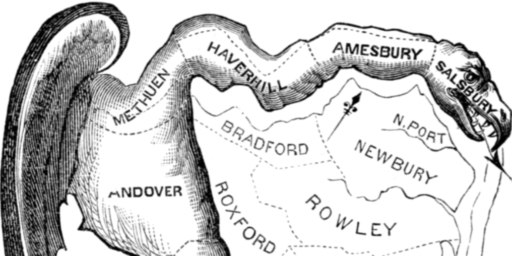
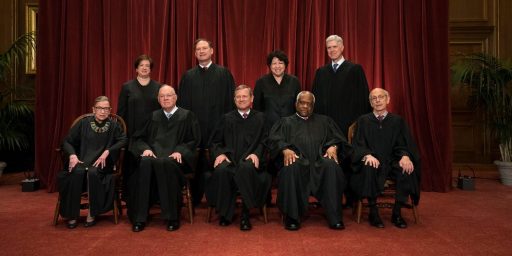
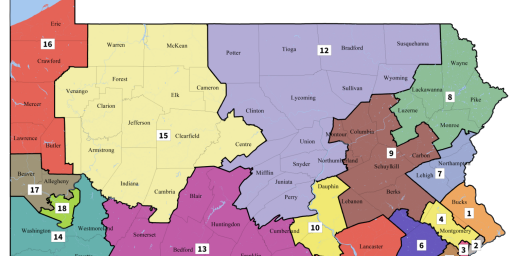
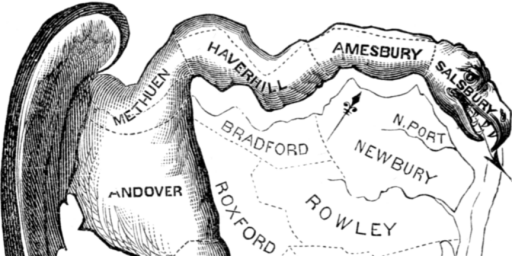
As far as I can recall, in every single recent case involving voting rights or redistricting, the US Supreme Court has sided with the conservative position, often undermining precedent. The gutting of the Voting Rights Act being the most egregious in my opinion.
I fully expect the current US Supreme Court to rule that any GOP gerrymanders are good to go, while ruling the Democratic gerrymander in Maryland to be unconstitutional.
Of course it’s possible. A Justice can only believe it impossible if he’s a Republican and very badly wants to so believe.
Stupid question time:
Would a Federal law setting up redistricting only through nonpartisan commissions be constitutional?
I know no such law would pass in the current Congress, but if it did would the courts let it stand, or would it be prima facie laughed out?
@Kathy:
I don’t believe they can do that because legislative districts are left to the states in the constitution. But I’m sure the attorneys can correct me as needed.
This conservative Supreme Court has pretty consistently ruled that intent does not count. I dont expect them to support eliminating this gerrymander. What will be ignored is that gerrymandering is much more precise now that we have computers to aid the process. Remember that it was a group of mathematicians who help show how precise the effort was in Pennsylvania.
Steve
@Kathy:
I agree with @EddieInCA that it would be unconstitutional.
Indeed, there’s a reasonable question as to whether state-level commissions are constitutional, in that the Constitution clearly says the state legislatures have that responsibility. In a 2015 case called Arizona State Legislature v. Arizona Independent Redistricting Commission, though, SCOTUS upheld the practice 5-4—with Roberts, Scalia, Thomas, and Alito dissenting. One suspects that the current court would go 5-4 in the other direction, since Kavanaugh has replaced Kennedy.